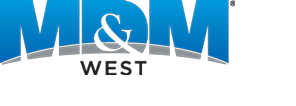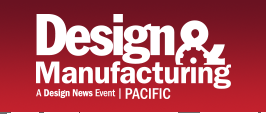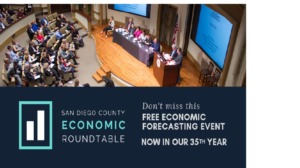Many disabled people that have to use walkers or wheelchairs are deprived of experiencing outdoor activities they used to enjoy, such as going to the beach, going fishing at lakes, or other outdoor activities. A new American-made product produced by Access Trax is restoring their ability to enjoy outdoor activities. Access Trax specializes in outdoor portable pathway solutions for wheelchair and handicap access for sand, gravel, grass, and more. Their premier product is the Trax modular pathway.
I learned about this product when I had lunch recently with a long-time friend, Kathy Roberts. Access Trax was co-founded by her niece, Kelly Twichel. Kathy said that Kelly wanted to help disabled people because her mother (Kathy’s sister) had a stroke when Kelly was only 12 and then spent the rest of her life being disabled before she died in 2020. Kathy connected me with Kelly, and I had the pleasure of interviewing her virtually last Friday.
Kelly said “While I was a student at the University of St. Augustine for Health Sciences in San Marcos in 2016, Eric Packard and I were tasked to create an assistive technology device as part of our course work to become occupational therapists. Our inspiration came from a desire to assist local adaptive surfers in crossing the sand to the water’s edge while maintaining dignity and independence.
We tested numerous prototypes in cooperation with the local adaptive surfing community before I graduated with a degree in Occupational Therapy in 2017. After we had achieved a successful design, we launched the company in early 2018. Our mission is for everyone to access the outdoors.”
She said that they got some good news coverage in 2019 and 2020 from local news outlets that helped increase their sales (see featured news coverage here).
She added. “We were on the verge of having to shut our doors in early 2020 and were saved by winning the highly competitive Federal Express Small Business Grant Contest and receiving a grant of $50,000. I was interviewed by Shawn Styles of CBS 8 San Diego News after winning the grant. This grant helped us to be able to nearly triple our sales in 2021 over 2020. All together, we have won over $100,000 in different grants since 2017, and we have been able to increase our sales every year.”
Kelly explained, “Besides selling our Access Trax mobile panels to individuals and families for personal use, we are also selling them to the National Park Service, City and County Park and Recreation Departments, and the U.S. Department of Veterans Affairs. Our latest customers are movie crews using the panels for outdoor film productions.”
Some of the benefits for these entities are:
- Stable walkway for ADA compliance
- Durable and reliable for years
- Quick and easy set up and maintenance
- Stake down panels for permanence
- Ability to customize the pathway
I asked Kelly if she had any patents, and she replied, “Eric and I were granted a design patent in 2021 and we have three trademarks. I recently applied for a design trademark on our logo. Our portable wheelchair access mats are durable, lightweight, foldable for use on terrain like sand, gravel, dirt, mulch, grass, and snow. They work with mobility devices and heavy equipment of up 1,000s of pounds.”
In answer to my question about manufacturing, she said, “No, we buy the raw material from a company in Florida and have a company in San Diego size the panels and add our logo. Then, my employees and I assemble the panels into our standard kits and ship them to customers using Federal Express.”
I asked if Eric is still involved in the day-to-day operations, and she said, “No, he is a silent partner now.”
Kelly said, “We give back to the community in three main ways. First, we sponsor outdoor adaptive sports events so participants can get the access routes they need over sand and grass. We have been an in-kind sponsor of events for the U.S. Open Adaptive Surfing Championships since 2017.
Second, I travel around the country to speak on subjects such as the value of adaptive sports and recreation, assistive technology, universal design, and how to become a social impact problem-solver. I share information based on my background as an occupational therapist and what I’ve learned with Access Trax.
Third, I joined a small group of San Diego-based nonprofits and businesses focused on empowering people in the community who use wheelchairs for mobility. The group coined their name the “Mobility Community Access Partners” or MCAP for short. Our first goal was to host an event in San Diego to bring people together. In June 2022 we hosted the first ever Adaptive Sports, Recreation and Resource Fair in San Diego. The event included adaptive sports such as wheelchair basketball, adaptive fitness, kayaking, boccia ball, and adaptive over-the-line.”
Kelly added, “Access Trax was a co-host of the June 3rd 2023 event “San Diego Adaptive Sports, Recreation & Resource Fair”. We also co-hosted it again last month on June 29th, 2024 at the same place (recap video).”
I told her that I have being doing what I could to first save and then rebuild American manufacturing since my first book, Can American Manufacturing be Saved? Why we should and how we can” was published in 2009. I’ve been using my God-given talents to write two more books since then, the latest being Rebuild Manufacturing – the Key to American Prosperity
I told her that besides writing hundreds of blog articles, I have been giving back by helping and mentoring inventors since 2014 as a board member for the San Diego Inventors Forum (SDIF)and was also a mentor for the CONNECT Springboard program for startup companies in San Diego from 2015 – 2018.
Kelly, said, “I went through CONNECT ALL at the Jacobs Center in 2019, which used to be partly supported by CONNECT. It was a business accelerator that supported local San Diego small businesses with an emphasis on minority and low-to-moderate income founders. When I went through the accelerator, it was a free, six-month program with mentorship, learning modules, and access to a beautiful brand-new coworking space. The program ran from 2019 until 2024 and each cohort was about 4 months long with about 10-15 founders each. Unfortunately, this program recently lost funding and the building was purchased by San Ysidro Healthcare so we lost our co-working space. But I will forever be grateful for that accelerator and the folks who managed it.”
Kelly later emailed me that the former CONNECT ALL is now The Jacobs Center’s Business Accelerator program The website says it “is the region’s first low to moderate-income and diversity-focused business accelerator program, guiding startups that want to grow rapidly with all the support they need to be successful. A partnership between the City of San Diego, CONNECT w/ San Diego Venture Group, and the Jacobs Center, the Business Accelerator was founded to provide participants with mentors, free co-working space, and guidance on how to scale their businesses.”
I told her that It’s very important to support companies like hers to restore our domestic manufacturing base. SDIF didn’t get to have any in-person meetings for three years because we lost our meeting location at AMN Healthcare’s conference center during the COVID pandemic lock downs, and Zoom meetings didn’t work out. Finally, we found a new location to resume meeting in person last September, so we just had our 11th meeting on July 11th. I told her that our group supports the national organization, US Inventors, that is working to restore our broken patent system. Our group currently meets the second Thursday of the month at the law offices of Knobbe Martens in the Carmel Valley area of San Diego. and invited her to our next meeting on August 8th. I thanked her for her time and wished her continued success for her much-needed product for disabled people.






